For most tennis players the forehand shot will be your most powerful weapon. It can change the momentum of the match in 1 swing. While there are many different factors that go into hitting the perfect forehand, let's discuss some of the basic elements that make up a consistent forehand shot. Remember, tennis is all about muscle memory and repetition. Once you've grooved a solid forehand stroke, keep at it and maintain consistent practice to make sure your game stays sharp.
The Grip
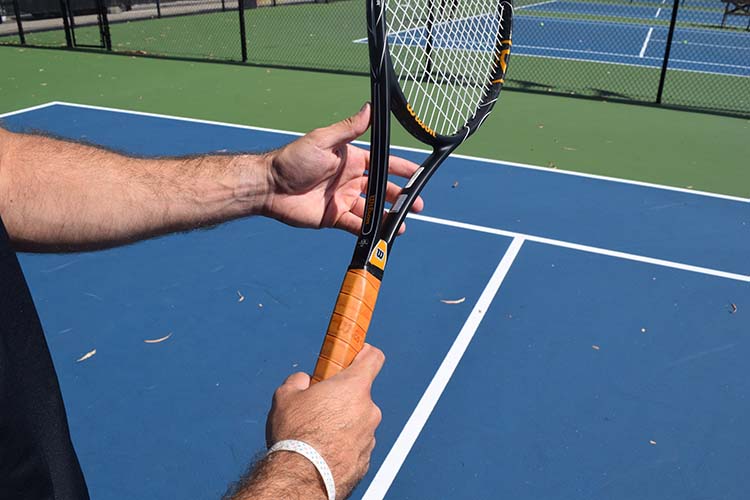
Every forehand starts with a proper grip. For this lesson we will be using the western grip. This is an easier grip to generate power with than the eastern forehand grip. As such, most coaches prefer this grip for powerful forehands because it can be effective for students of all ages. The way to achieve the most basic western grip is as follows:
- Hold your tennis racquet out in front of you with your left hand. Hold the racquet from the neck and hold it out in front of your body at about sternum height.
- Make sure that the strings are pointing to the left and right of your body. In other words, make sure the strings are not facing you. You should be looking down at the frame of the racquet.
- Take your right hand and place is on the strings on the right hand side. Move your hand slowly down the racket until you reach the handle.
- Extend out your index finger just slightly. The feeling is similar to pulling the trigger on a gun.
Now you've got the basics down for the western forehand grip. Next, you've got to get in position.
Body Positioning
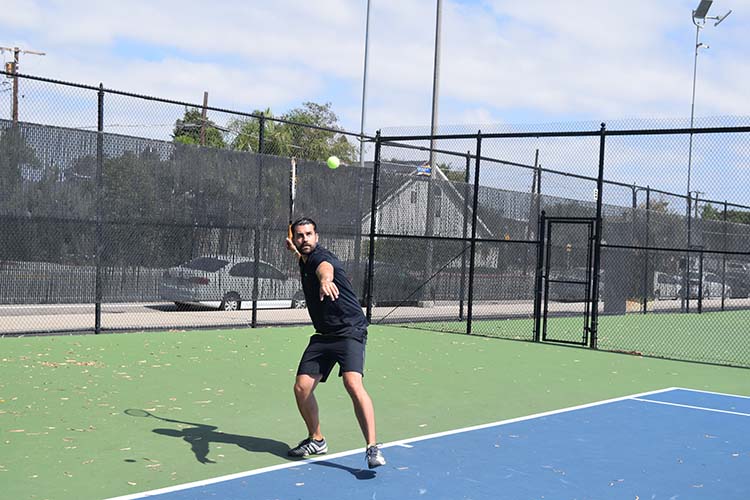
Now that you are holding the racquet correctly, let's look at your body positioning. Before you strike the ball, make sure that your left shoulder is pointed at the target in the court you intend to hit the ball. This positioning should put you parallel to the ball allowing you maximum control over your aim.
Proper footwork is critical to accomplishing proper body position. Most tennis players focus too much effort on forehand technique not enough effort improving their footwork to get them in better position. Never wait too long to get into position to hit your forehand. Do not stand flat footed as your opponent hits their shot. Bounce around on the balls of your feet. Be ready to move in either direction and allow yourself the most time possible to be put into position so when you take your swing you are striking the ball in your sweet spot.
The Backswing
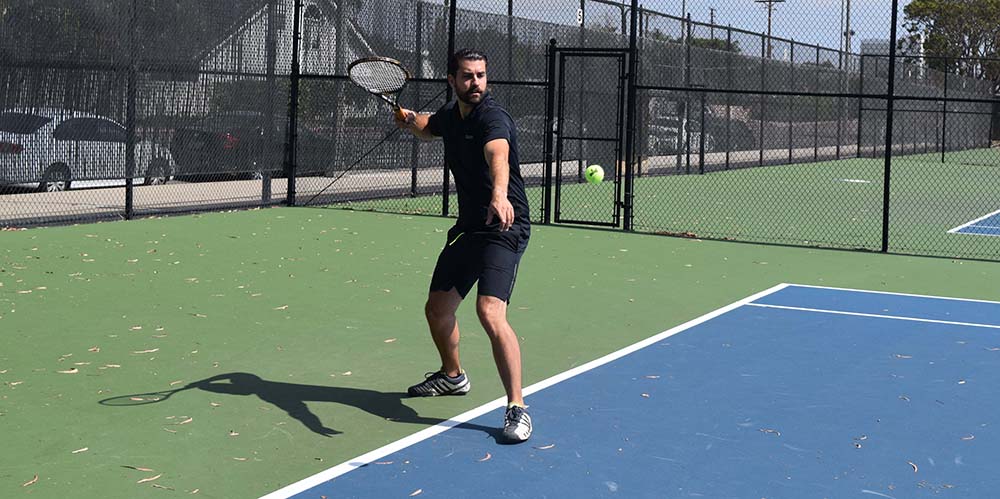
As you take the racquet back, the head of the racquet should be above the height of the tennis ball. Then, in a simple looping motion, allow the head of the raqcuet to drop slightly below the level of the ball. Imagine you're trying to trace part of an infinity loop with your racquet and you'll have the picture. Make sure when you take the racquet back you take it back completely through this range of motion. Many tennis players shorten up their backswing but this is not recommended when you are learning. Each swing should be performed at full range of motion with varying levels of strength. In order to give yourself time to do this, make sure that you take your backswing well before the ball is within distance of being struck. This may cause a slight pause in your swing but a slight pause is a far better than rushing your backswing.
When you start the downswing, make sure your knees are bent and you are moving towards your target.
Impact
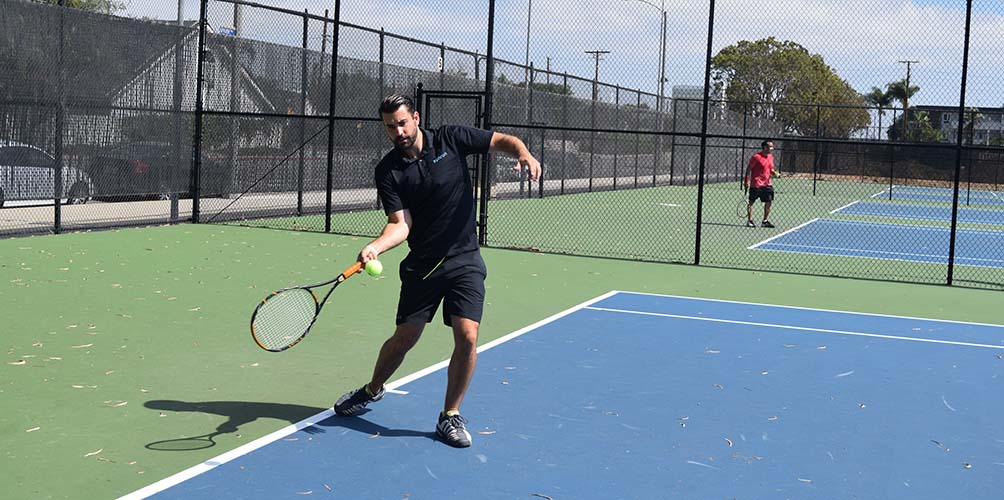
Every player has their personal preference when it comes to what height is most comfortable to strike a forehand. Most tennis professionals would agree that it is ideal to strike the ball at a height anywhere between your lower thighs to your waistline. Anywhere below or above this area makes it exceptionally more difficult to hit a controlled shot.
When you make contact with the ball at your thigh level it's imperative that you brush up on the ball. Imagine you are trying to slice the skin off a potato. This brushing up motion will return the ball with topspin. Topspin will allow your shot to come down before the baseline with enough velocity that it draws your opponent back discourages them from charging the net.
The Follow Through
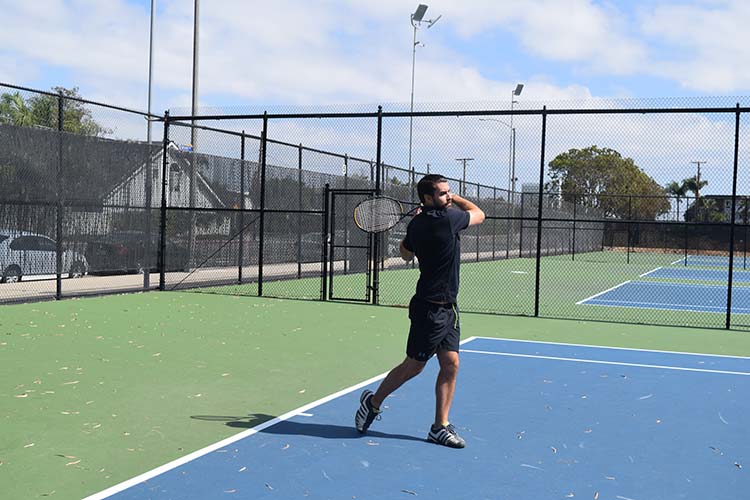
After you have struck the ball, make sure to finish high over your left shoulder as you simultaneously square your shoulders to your targeted ball location. There should be absolutely no body rotation until after the ball is struck. Maintaining a parallel stance prior to making contact will ensure the ball comes off the head straight and controlled. At the end of each swing, return your racquet to neutral position with both hands properly positioned. Returning to your ready stance at the baseline prepares you for your next shot - regardless if it's a forehand or backhand.